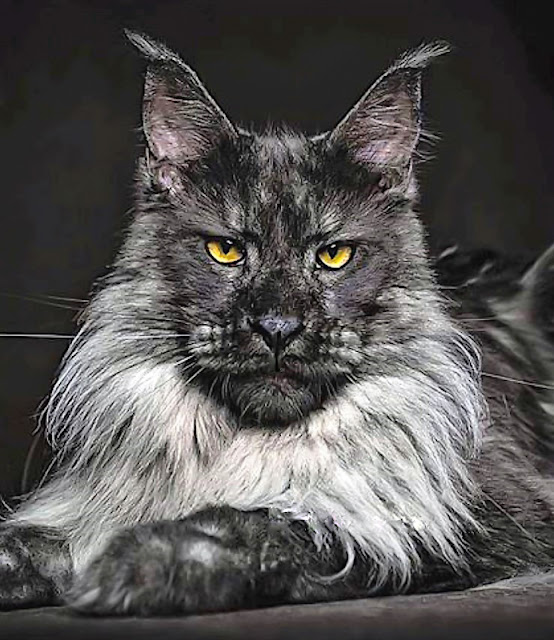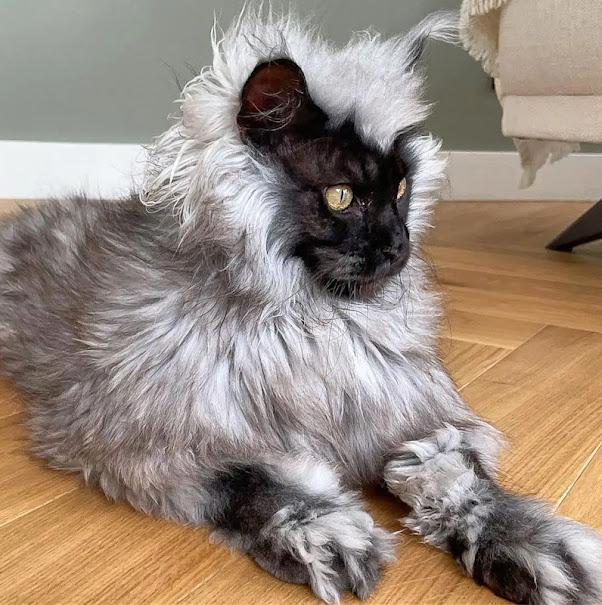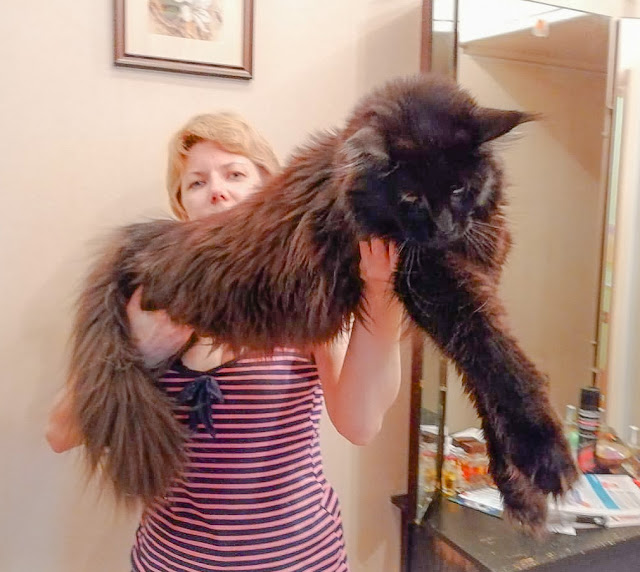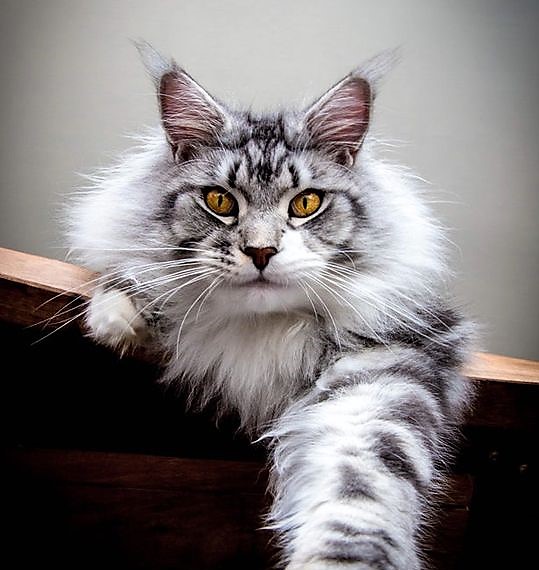What can a Maine Coon owner do to help their cat with hip dysplasia?
We know that hip dysplasia is fairly common in Maine Coon cats at around 23%-30% of the population getting it, which is a bit shocking when you think about it. Breeders can do more to prevent it. And it can develop at an early age.
This implies to me that your Maine Coon cat companion may be suffering from hip dysplasia for a substantial part of their life. Although the symptoms may not be visible until the cat is adults or even elderly.
Is there something you can do about it? Can you ease the discomfort and difficulties that it presents?
Well, I've been digging around for an answer to those questions. I sense that there is not a lot that a Maine Coon cat owner can do that is very effective, regrettably.
Michigan State University, College of Veterinary Medicine, rather confidently state that most cats with hip dysplasia respond to non-surgical management. That's a reference to a combination of "environmental changes, physical therapy, drug therapy, or weight loss".
 |
| Hip dysplasia can start at a young age and cats, but it might not be symptomatic or obvious to their owner until much later in life. Image: Instagram. |
Weight loss
It's common sense but if a Maine Coon cat is overweight, they should be on a diet. Maine Coon cats should have an ideal weight or dare I say it be slightly underweight even. This would alleviate the pressure on the hip joints.
My understanding is that the bigger Maine Coon cats are more likely to suffer from hip dysplasia and/or the most discomfort from hip dysplasia.
The first thing that a Maine Coon cat owner can do is the obvious one: make sure that their cat is not overweight.
You can ask your vet what an idea weight is for cat is. Alternatively, you can feel your cat's rib cage. If there is a thin layer of fat over, it but you can feel the ribs then he or she will be of an ideal weight.
Looking from above there should be a slight "waist" before the rump. This may be slightly difficult to see because of the shaggy, medium-longhaired coat 😉.
Environmental changes
What does this mean? My understanding is that it means ensuring that your cat maintains strong muscles in the hips. And environmental changes that can be made to encourage this is, for example, to encourage your cat to jump up to get their food. This would be 'moderate exercise'.
Maine Coon cats with hip dysplasia are reluctant to be involved in activity and jumping. The advice that I read on the Internet is that it is better for a cat with this condition to engage in some exercise to maintain muscle strength to help support the joint.
It is also suggested that gently moving the hip joint manually may help to decrease muscle stiffness.
"Environmental changes" might also refer to making the environment easier to navigate for a cat with hip dysplasia. It's going to be a balancing act.
Because encouraging the development of muscle mass at the hip joint is going to have marginal benefits in my view, it may be as much assistance to make life easier for a cat with this condition.
After all, they are disabled, and their caregiver should do all they can to provide the amenities to accommodate a disabled cat.
Physical therapy
I've touched on this above. This must refer to improving muscle mass and ensuring that the muscles don't freeze up in supporting the joint.
You might consider the alternative treatments of massage and acupressure or acupuncture. Massage can't cure hip dysplasia, but it can provide temporary relief of the discomfort. It loosens up the muscles. It might be a pleasant experience for a dog or cat suffering from this condition.
Some people believe in acupuncture and others don't. It might be worth a try. Some holistic veterinarians might recommend it and a cat might benefit from acupuncture because it relieves chronic pain and can increase their range of motion. Acupuncture is used to treat arthritis, hip dysplasia and ligament injuries in pets.
Drug therapy
This must include dietary supplements although not strictly drugs. These include glucosamine and chondroitin which a veterinarian may recommend in order to strengthen the connective tissue in the joint.
Clearly pain relief of some sort is on the cards. Veterinarians might prescribe pet aspirin or nonsteroidal anti-inflammatory drugs to reduce inflammation and relieve pain.
As hip dysplasia causes swelling and irritation of the joint, cortisone injections might decrease the inflammatory component of hip pain.
I have a feeling that these should be limited as long-term use might be detrimental. Once again there is a balancing act.
Cat owners shouldn't give any drugs to their cat without veterinary input. My reference book on the topic states that "Chondroprotective supplements, such as Sea Flex, Cosequin, Glycoflex, and other glucosamine - chondroitin combinations are helpful.
Make sure any joint supplement you brightly specifically formulated for cats. The mentioned drugs are American but they might be available elsewhere.










Comments
Post a Comment
Please share your Maine Coon experiences.